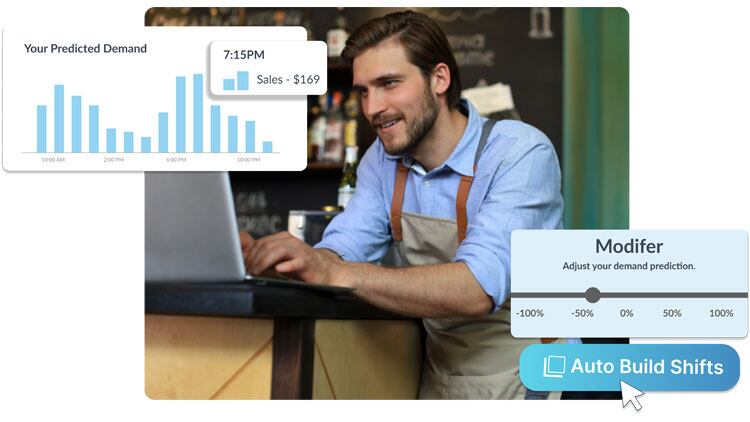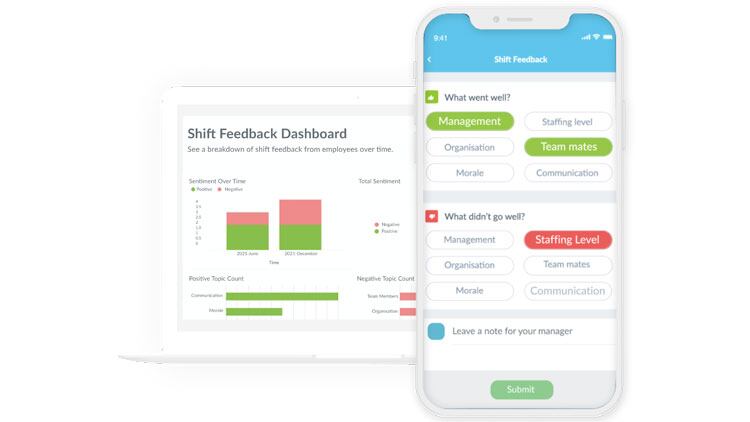Staffing restaurants has always had its challenges but Brexit and the pandemic - a gruesome twosome if ever there was one - landed the sector with its worst-ever staffing crisis. Things are now improving, but a lack of experienced staff continues to constrain the industry, forcing operators to overhaul long-established working practices, pay staff more and completely rethink their hiring policies. Increasingly, the industry is turning to tech to help. Often app-based, workforce management solutions can perform a wide range of HR functions including onboarding, rota planning, payroll, internal comms, task scheduling and training. Digitising HR also generates data that can be used to analysis how effectively staff are being utilised. To understand how such systems work, we caught up with leading workforce management software provider Workforce.com.
Content provided by Workforce.com and Tevalis
Seamless labour management integration
Arguably, organising your workforce is one of the more challenging aspects of hospitality operations. That’s why Tevalis and Workforce.com have created a seamless labour management integration. Workforce.com is intuitive, with numerous time-saving features that reduce labour costs and improve employee engagement. The platform integrates directly with Tevalis EPOS, meaning sales data is synced to Workforce.com for cost-effective labour management. Our mutual client Tamatanga has seen significant benefits from our integration, as operations manager Jon Douglas explains: “The integration with Tevalis and Workforce has revolutionised our business. By being able to build rotas on demand from sales data from Tevalis, we’re more accurate in our staffing and have seen a significant reduction in our labour costs. Our frontline managers are making data-driven decisions daily to ensure we have optimal labour costs. The team loves it, and our budget has never been better!” Discover more about Tevalis and its integration partners here and about Workforce.com here.

What exactly do workforce management solutions do and why should businesses consider investing into them?
We offer a complete workforce management and HR tool for businesses to efficiently manage hourly workforces. Whether it’s a simple time clock app, instant communications, demand-driven staff rotas to ensure optimal staffing levels, or managing staff performance, Workforce.com is designed to reduce labour costs, enhance employee engagement and improve productivity and efficiency. Hospitality operators have started to embrace technology over the last decade and understand that if you can streamline operations and create a more engaged workforce, they can supercharge their sustained success and growth and stay competitive.
What are the benefits of digitising rotas and HR processes?
There are many benefits to digitising rotas and HR processes. Some of the biggest ones are that once you digitise, you start to eliminate the time-consuming, manual work involved in responsibilities such as creating and managing schedules, onboarding staff, or running payroll. The reduced time in manual effort allows both employees and managers to focus on areas of the business that really matter, not least looking after guests. Another major benefit is that you can significantly improve your efficiency and bottom line profit. When hospitality operators integrate their EPOS system to Workforce.com, they are able to easily see forecasted sales for the day and build precise rotas that meet forecasted demand. Creating the most labour-optimised schedules through Workforce.com’s powerful machine-learning algorithm will give you a perfect rota - taking into account weather, footfall, events and location-specific trends - all at the click of a button without sacrificing customer service.
What should customers consider when choosing a workforce management system?
Because every business is different, it’s crucial to prioritise specific considerations when selecting a workforce management system. Begin by posing key questions tailored to your priorities. A great initial first question you’ll want to ask is ‘how easy is this system to use and navigate?’. An easy-to-use system will help drive adoption across your team, ultimately saving managers valuable time and effort. Another question to ask is ‘does this workforce management system integrate with my EPOS and payroll systems?’. By having an integrated tech stack, you’ll minimise manual tasks and mitigate the risk of errors. Additional inquiries such as whether the system reduces headaches around rota creation, leave management, and payroll processing need to be considered. As well as does it ensure labour compliance, and does it guarantee that staff are paid correctly for the hours they have worked? Investing in a workforce management tool should remove friction in your workforce and streamline your day-to-day operations. At the end of the day, purchasing a new system will be an expense item on your profit and loss. But, if it is improving your wage percentage revenue numbers and reducing your labour costs by even 5%, then the system is a worthwhile investment.

How has the pandemic changed how restaurant staff approach work?
While the restaurant industry has bounced back from the pandemic to some extent, the trading environment remains extremely challenging and staffing shortages are a big part of that. This is due to employees who were furloughed either moving away or simply not returning to work. All this has changed the recruitment landscape, with staff now looking for more perks from their employers such as better work-life balance, equitable scheduling, benefits, and the ability to see and map out career progression.
What advice would you give to a restaurant business that is looking to reduce labour costs?
Over the past few years, we have heard operators express how inflation on fixed costs such as rent and energy prices has put additional strain on their business. One thing that operators can control is their labour spend and these incremental wins over time can make a huge difference to the bottom line. Some tips we would recommend to operators would be to embrace technology. As they say, ‘you can’t manage what you can’t measure’, so make sure that you have access to all your relevant labour data, understand how much you’re spending and start to make small improvements. Effective scheduling is also a major differentiator. Operators should be able to easily view and understand their busy and slow periods of each day based on forecasted and actual sales. Additionally, they should be able to roster appropriately without compromising service quality.

What do operators need to consider when it comes to integration and compatibility?
What we saw throughout Covid was that operators cobbled technology together out of a necessity to innovate. More often than not, a Frankenstein-like mess was created that required lots of manual work and intervention. We would recommend that operators consider three elements. Firstly, operators should consider technology that seamlessly integrates with their existing systems, such as a POS system, as this will ensure a smooth transition without disrupting day-to-day operations. Secondly, user-friendly and intuitive interfaces are a must. This guarantees quick adoption from your staff and minimal training time. Thirdly, choose technology that is easy to implement, and has comprehensive training materials and responsive support teams. Operators are usually hesitant to change technologies in their stack due to painful experiences they have gone through in past implementations, even though the change will improve their business. Technology implementation processes have improved drastically and your expectation should be that implementing will be done quickly and efficiently without many day-to-day disruptions.
How can operators use technology to manage staff performance?
Using technology is a game changer for operators looking to elevate staff performance. We would recommend that businesses start by setting their KPIs and using a data-driven approach to understand who is a high performer. Then identify areas for improvement and work to understand the team’s overall output. When operators have a robust HR system, it makes life easy for them to see who is on shift, who has turned up late, leave file notes on their employee profile, track who the highest and lowest performers are, and be able to manage everything in one consolidated system. This helps the employees, managers and leadership. Employee engagement is also a great way to improve productivity and performance. If you have transparent communication channels that facilitate real-time feedback, you can address concerns and acknowledge accomplishments in a timely manner which guarantees a better staff output.

What should restaurants bear in mind when calculating labour costs?
When calculating labour costs, a holistic approach should be taken. This means that businesses should consider everything - wages, benefits, taxes, training costs, accurate time tracking, overtime, and employee turnover. This might sound like a daunting task at first but, if businesses have a comprehensive system in place, they should be able to easily view this data, create KPIs, and put an action plan in place where they can quickly and easily monitor ongoing progress. Small changes, consistently done over a long period of time, make the biggest difference to your bottom line.

